Right between Russia and China, Mongolia, “the land of the eternal blue sky”, sits on a high plateau at an average altitude of 1500 meters. Far from any ocean or sea, it’s the second largest landlocked country in the world. Comprised by endless steppes, the spectacular Altai Mountains, and the vast Gobi Desert, it is both remote and beautiful. And much remains as it did centuries ago. One feels time has stood still here, as nomadic horsemen ride the windswept plains and ancient Tibetan Buddhism continues to flourish. Most famously, Mongolia is believed to be the resting place of Ghengis Khan, whose fearsome warriors put the country on the World map.
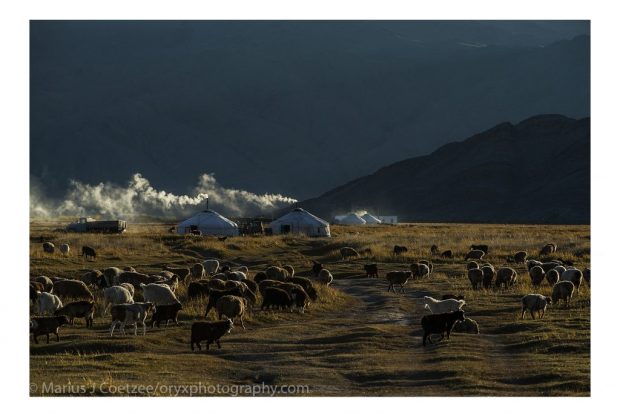
With its rich avifauna (see slideshow here), Mongolia is a sought-after destination for Westerners seeking a genuine avian adventure (triplist here). Spring happens fast, so our tour is timed to maximize our chance at seeing the special birds of Mongolia and to avoid the buggy season later in summer. Not to mention, our nice group size (max of 8) and great price provide excellent value for those interested in birding Mongolia.
Below Rockjumper guide David Erterius gives us his votes for his Top 6 birds of Mongolia.

Guide David Erterius possesses unbounded enthusiasm and superb field skills.
White-naped Crane Grus vipio
With a unique combination of pinkish legs and a dark grey-and-white striped neck, this majestic crane is listed as vulnerable, with a total world population estimated at only 4,900 – 6,500 individuals. Sadly, its numbers are in rapid decline, mainly owing to habitat loss in both the breeding and wintering grounds. White-naped Cranes breed in northeastern Mongolia, northeastern China, and adjacent areas of Russia, nesting in wetlands along lakes and river valleys in eastern Mongolia. Mongolia is the most accessible place in the world to see this lovely species on its breeding grounds.
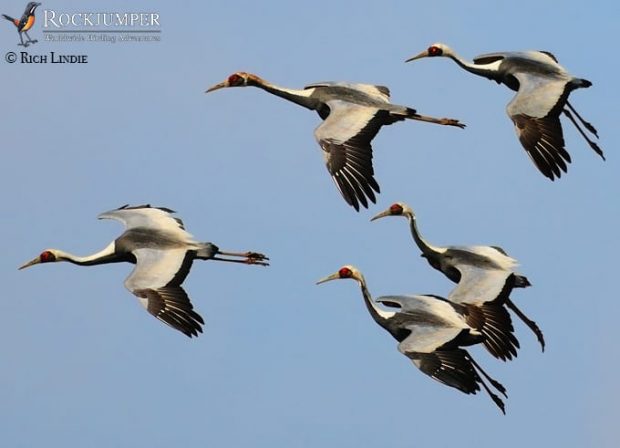
Oriental Plover Charadrius veredus
About 90% of the entire world population of this species winters in northern Australia, but nothing compares to watching a male doing its peculiar wobbling Pterodroma-like display-flight over the endless wind-swept steppe of the vast Gobi desert. An elegant plover, with a white face, slender body, long legs and surpringly powerful flight, this bird’s breeding habits remain little-known where we see it in Mongolia.
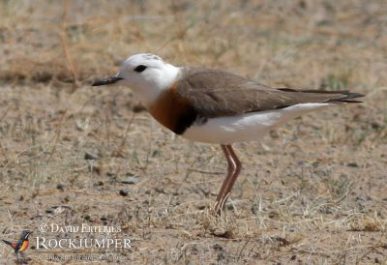
Relict Gull Ichthyaetus relictus
Only just determined a valid species in 1971, this seldom seen gull was previously believed a race of Mediterranean Gull or a hybrid between Brown-headed Gull and Pallas’s Gull (!). In recent years, we’ve learned more about it and breeding sites are now known from China, Russia, Kazakhstan and Mongolia. A ”vulnerable” species, the Relict Gull requires specific water levels at the shallow saltwater lakes where it breeds. Nearly the entire population winters on estuarine mud flats and sandbars in a small area of northeast China with smaller numbers in South Korea, where their habitat is lost to reclamation projects and development. (Rockjumper, through the Rockjumper Bird Conservation Fund, is proud to support Birds Korea in their work monitoring the birdlife in this sensitive region).
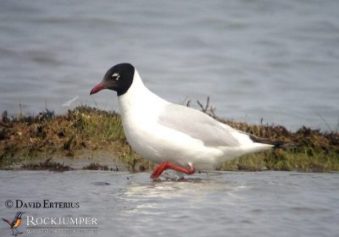
Henderson’s Ground Jay Podoces hendersoni
One of four species of Ground Jay from Central and East Asia, a group occupying space within the Corvidae family (crows, ravens, jay, etc.), this species is resident in Mongolia, adjacent parts of China and small parts of Kazakhstan. Still little known, with few nests ever found and a poorly understood vocal repertoire, it is typically found in singles or pairs amid desolate barren ground with small scattered scrubs. Their specialized long, curved, strong bill is adapted to digging and probing in the ground for beetles and other similar sized prey items. Certainly, this jay ranks chief among the great birds of Mongolia.
White-throated Bush Chat Saxicola insignis
Another poorly known bird, this once common chat is today in steep decline due to loss of its wintering grassland habitat. Threatened by drainage, conversion to agriculture, overgrazing, flooding, and thatch harvesting, it breeds very locally in the mountains of Mongolia and adjacent Russia, wintering in the terai of northern India and Nepal. A large chat, adult males exhibit a striking blackish hood, which contrasts with a white throat, and it has white primary coverts and a rufous-orange breast.
Koslov’s Accentor Prunella koslowi
While rather plain and nondescript at first glance, this poorly known species is a near-endemic, occurring only within the thin scrub of the semi-deserts and dry mountains of west, central and southern Mongolia and adjacent China. Also known as Mongolian Accentor, this bird is in Prunellidae, the only bird family endemic to the Palearctic. Indeed this accentor is always a great find when birding Mongolia.
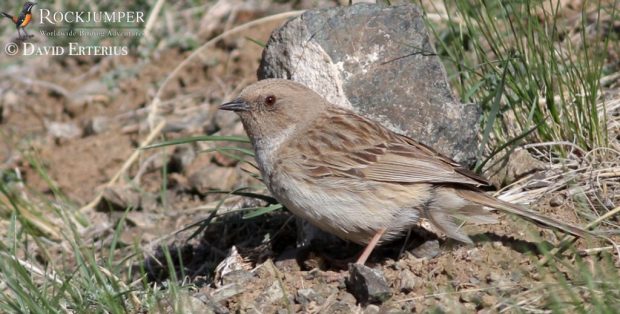
Our 2017 tour to Mongolia from May 22 – June 10th will see us crossing rivers and valleys, camping in the desert, and traveling high into the mountains, experiencing fantastic landscapes all along the way. If you own a pioneering spirit and a desire to travel where few have been before, guide David Erterius is ready to share with you his favorite birds on this thrilling adventure. Join David in spring of 2017 to go birding in Mongolia! There is no better way to see the country.
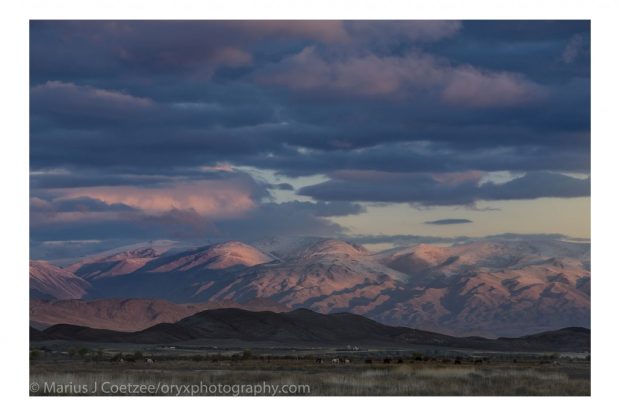
The scenery in Mongolia is stunning, with beautiful landscapes, at times as far as the eye can see. Oryx Photography Expeditions guide Marius Coetzee captured this image on our Mongolia Photo Tour.
